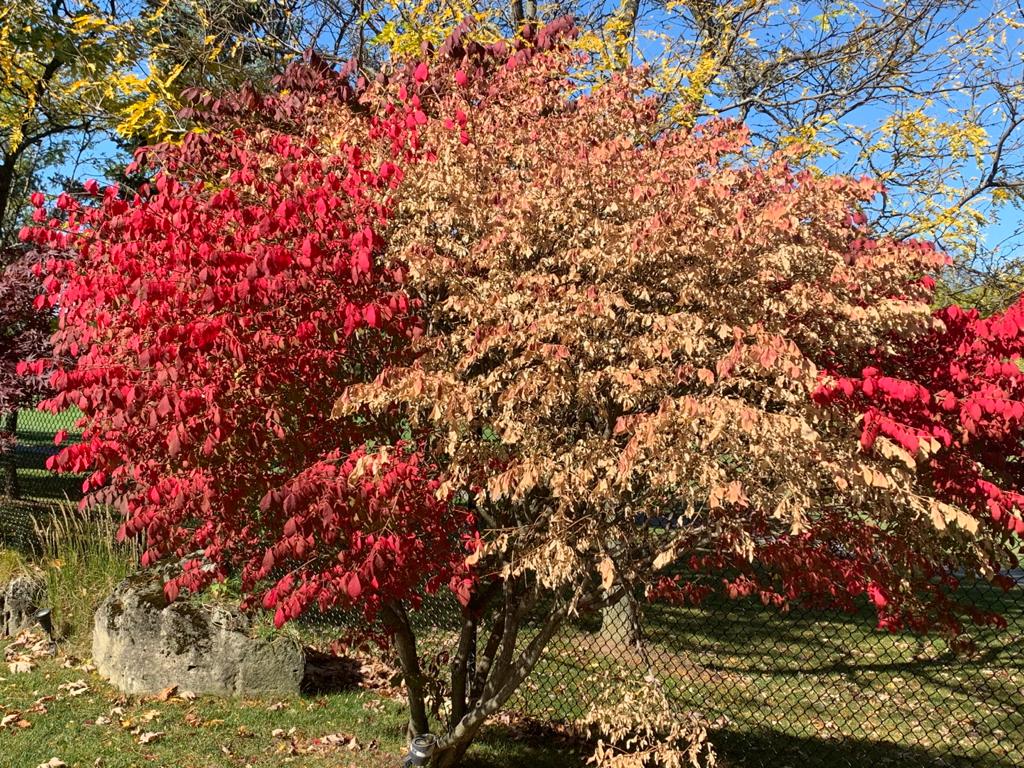
Hello, I have a Bush that is dying. It started to get brown on the tip of one branch and now two big branches are dead . I’m afraid it is spreading. How can I save my Bush.
It is in full sun, clay.
Thanks!
Thank you for contacting the Toronto master gardeners with your inquiry concerning your shrub.
Without a close up of the leaves it is difficult to identify your shrub with 100% certainty. That being said, the colour of the leaves and the overall shape of bush leads me to believe that the shrub in question is Burning Bush ( Euonymus alatus ).
Random branch dieback can be attributed to many things such as root rot or this year’s drought. You should also check to see if there is any insect activity on the plant. Here is an article from Iowa State University that describes the most common insect pests of Burning Bush, and offers some treatment strategies:
https://www.extension.iastate.edu/news/2006/jun/070901.htm
The fact that the disease is moving so quickly throughout the shrub leads me to suspect that the problem might be Verticillium Wilt. Verticillium wilt is a disease that often shows up with sudden die-back of one large branch, or 1/2 of the plant. It must be confirmed with lab tests but it usually progresses rapidly and often results in the death of the plant.
Verticillium is a soil borne fungus that affects the ability of the plant to transfer moisture and causes the plant to decline in vigour, resulting in sudden wilting of branches, yellow leaves, stunted growth and premature defoliation. Once cut, the branches may have green or black streaks visible in the xylem. Sometimes the disease appears on one branch, then seems to go away for awhile, taking several years to be fully evident. Verticillium infection usually starts in the roots and spreads from there (via xylem, the plant’s “circulatory” system) throughout the plant, although it can enter via wounds on branches or trunks. Have you seen any evidence of wounds near the base of the shrub? Ultimately the infection cuts off water flow, causing wilting.
There is no control for Verticillium Wilt. To try and save your shrub, prune out all dead branches, leaving all branches with leaves for photosynthesis to aid plant recovery. It is important to keep your plants as healthy as possible. This includes ensuring there is lots of space between plants (increased air circulation discourages fungal growth) and regular fertilization (healthy plants are more likely to resist attacks by fungus). Do not allow the soil to become soggy, which would encourage fungal growth; use compost to enhance the health of the soil and promote good drainage.
As some strains of verticillium fungus can live for many years in the soil and there is no way to eliminate it from the soil, make sure you do not move the infected soil or leaf/other debris from that spot to other parts of the garden. Do not put the leaves/branches from this infected shrub in the compost. Instead, place them in a garbage bag for regular pick up. You might want to consider planting species that are resistant/immune to verticillium wilt in this spot.
The following links gives additional information on this disease as well as a list of resistant species:
https://depts.washington.edu/hortlib/resources/ucdavis_verticillium.pdf
https://www.uaex.edu/environment-nature/forestry/health/BP_6_W.pdf
Good Luck!

